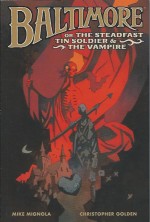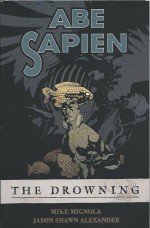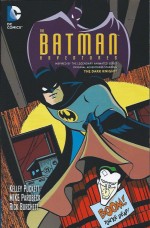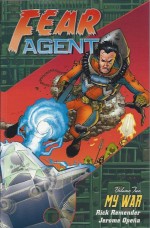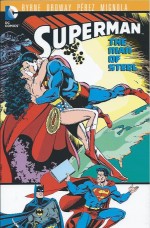
By Tom Tully & David Sque (Titan Books)
ISBN: 978-1-84856-024-6
There was a time when comics in Britain reflected the interests of a much larger proportion of the youthful population, and when adults kept their less-acceptable reading habits a closely guarded secret. Since it became practically cool to read graphic narrative, however, many of the nation’s greatest comic-strip heroes – sporting, as well as action-based or freaky and fantastical – have been making their way back in various collections and revivals.
Roy of the Rovers began on the front cover of Tiger, a brand new weekly anthology periodical published by Amalgamated Press (later IPC and Fleetway Publications). Launched on September 11th 1954, “The Sport and Adventure Picture Story Weekly†was a cannily crafted companion to Lion, the company’s successful response to The Eagle (home of Dan Dare, but precious few sporting heroes).
From the first Tiger concentrated heavily on sports stars and themes, with issue #1 also offering The Speedster from Bleakmoor, Mascot of Bad Luck and Tales of Whitestoke School amongst others. In later years racing driver Skid Solo and wrestler Johnny Cougar joined the pantheon of traditional strips such as Billy’s Boots, Nipper, Hotshot Hamish and Martin’s Marvellous Mini, but for most of its 1,555-issue run Tiger was “the comic with Roy of the Roversâ€.
Roy started as a humble apprentice at mighty Melchester Rovers, and after many years of winning all the glories the beautiful game could offer, settled down to live the dream: wife, kids, wealth, comfort and triumphant adulation every Saturday…
Created by Frank S. Pepper, who used the pseudonym Stewart Colwyn, and drawn by Joe Colquhoun (who kept the nom-de-plume when he eventually began scripting the series as well), the evergreen adventures of Roy Race were generally written for much of his early career by the comic’s Editor Derek Birnage (although credited to “Bobby Charlton†for a couple of years).
In 1975 time finally caught up with Roy and he became player-manager of the only club-team he ever played for, and the following year the footballing phenomenon got his own weekly comic, just in time for the 1976-77 season, premiering on September 25th and running for 855 consecutive issues, only ending with the 20th March 1993 edition.
This glossy oversized paperback excerpts the covers and lead strips from the eponymous Roy of the Rovers weekly spanning the first issue to 2nd June 1979, when the comic was regularly selling a million copies a week. The stories were always much more than simply “He shoots! He’s scores!!!†formulaic episodes: they’re closer to the sports-based TV dramas of later decades like Dream Team or Friday Night Lights (although of course that’s not about proper football…)
Weekly comics have a tremendous advantage when it comes to staying topical. From draught script to issue-on-sale can be as little as six weeks. This meant that with a judicious eye to the upcoming events diary, a strip can comfortably lock into big public occasions and even short-lived crazes.
This stellar selection re-presents material from a period when the game was changing radically and writer Tom Tully made full use of contemporary headlines and concerns to spice up the action. With reliable David Sque handling the full-colour artwork the serials here encompass burning issues of the era such as too much money, too little money, the burgeoning transfer market (“£60,000 for a striker!â€) and even the Rovers’ first international purchase…
One word of warning: although the artist has endeavoured to keep most of the era’s fashion atrocities to a minimum, this is a book overflowing with the tonsorial travesties that typified the “Age of Mullets†so if you’re of a nervous disposition…
The soccer shenanigans start with all the teams in the League increasingly disturbed by a flashy supermarket owner’s offer to pay £30,000 to the first player in English football to score 50 goals in one season.
As the unity-shattering Goals Rush Challenge competition progresses Roy – himself a strong contender for a prize he does not want and will not accept if he wins – has to fend off dissent in the team, accusations of selfish greed from the fans and far worse from a crusading sports writer who thinks he’s selling out…
At the same time the close-knit squad was chasing an unbeaten-run record and forced to expand, wrecking the harmony of the team as new players with selfish modern attitudes muscled in and found that here they had to adapt to Roy’s way or the highway…
Along the way Penny Race quietly and dutifully had twins (so as not to disturb her husband’s soccer ruminations, I suppose) and as the team celebrated another stunningly successful year, Roy nipped over to the USA for the off-season to save a friend’s all-star soccer team from bankruptcy and found himself having to learn the glorified Rugby that Americans call “Football†before anyone would listen to him…
On his return he brought a few new-fangled ideas such as giant replay screens which came in very handy for the new season as the spectre of hooliganism at last reared its mindless head at Melchester, before the compendium of past glories concludes with the team looking for a sponsor for their new kit whilst Roy and the boys grudgingly become acquainted with abrasive Paco Diaz, the legendary Spanish soccer god forced upon them by the profits-mad Board of Directors…
As well as a Foreword from Frank Skinner, celebrity-studded photo-articles and pin-ups of the period, this edition includes numerous features by footy-mad comedy genius Eric Morecambe, games, puzzles, readers’ jokes in Famous Football Funnies and a mouth-watering selection of adverts of the time, offering everything from Dinky toys to Raleigh Bikes – a dedicated nostalgist’s perfect storm…
Old football comics are never going to be the toast of the medium’s Critical Glitterati, but these were astonishingly popular strips in their day, and produced for maximum entertainment value by highly skilled professionals. They still have the power to enthral and captivate far beyond the limits of nostalgia and fashion. If your footy-mad youngster isn’t reading enough, this might be the cunning tactic to catch him or her totally offside…
Roy of the Rovers © Egmont UK Ltd. 2009. All other material © its respective creators or copyright holders.

